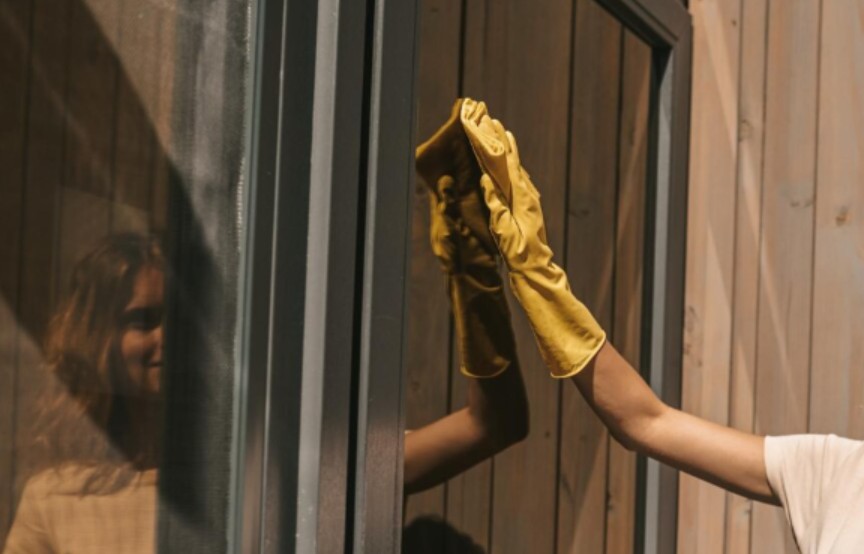
What Happens if You Tint the Outside of House Windows?
Window tinting has become a popular choice for homeowners who want more privacy, protection from the sun, or a modern aesthetic. But one question comes up often: “Can I tint the outside of my house windows instead of the inside?” At first, it might sound like a simple idea. Stick the film on the exterior, and you get the benefits without having to move furniture or work indoors. But the reality isn’t quite that straightforward.
Let’s take a closer look at what really happens if you tint the outside of your house windows.
Exterior Tint vs. Interior Tint: The Basics
Most residential window films are designed to be applied to the inside surface of the glass. This protects the film from weather conditions, keeps it cleaner, and extends its lifespan.
When tint is applied on the outside surface, it is directly exposed to the elements—sun, rain, wind, dust, and temperature shifts. That exposure changes how the film performs and how long it lasts.
Shorter Lifespan of the Film
The biggest drawback of tinting the outside of house windows is durability. Exterior conditions are harsh. Ultraviolet rays, heat, and constant weathering can cause the adhesive to break down faster.
Instead of lasting 10–15 years like many interior window films, exterior films may only last a few years before showing signs of peeling, bubbling, or discoloration. In other words, you’ll likely find yourself replacing the film much sooner.
Increased Risk of Damage
Another issue is physical wear and tear. Outdoor window tint is vulnerable to scratches from branches, accidental contact, or even cleaning tools. Once damaged, the protective qualities of the film are compromised, and the appearance of the window suffers.
Because outdoor film is more exposed, even routine maintenance like washing windows can wear it down faster compared to film installed on the inside.
Heat Absorption and Glass Stress
Here’s a detail most people don’t think about: the way glass reacts to heat. When you put a dark or reflective tint on the outside surface, the glass may absorb and retain heat differently than it’s designed to.
This uneven heating can sometimes cause thermal stress cracks, especially in double-pane or low-E glass windows. It doesn’t happen every time, but it’s a risk worth considering before deciding to tint the exterior.
Appearance and Curb Appeal
On the positive side, exterior tint can make an immediate difference in how your home looks from the street. The film can give your windows a uniform appearance, reduce glare, and add privacy during daylight hours.
Many homeowners like the mirrored or darker aesthetic that exterior tint provides. Just keep in mind that over time, weathering may cause fading or streaks that affect the clean look.
Privacy and UV Protection
Whether installed inside or outside, tint does help with daytime privacy and blocks a large portion of harmful UV rays. That means you can still reduce fading of furniture and flooring, even if the tint is on the exterior.
However, because outdoor films tend to degrade faster, the long-term UV protection may not be as reliable compared to interior installations.
Maintenance Challenges
One more thing to consider: cleaning tinted windows from the outside can be tricky. Harsh chemicals, abrasive sponges, or even high-pressure hoses can damage the film. That means maintaining both the clarity and the life span of the tint takes extra care.
When Exterior Tinting Makes Sense
That said, exterior tinting isn’t always a bad idea. In some cases, it’s the only practical solution—for example, when interior access is blocked or when a building’s glass design prevents inside application. There are specialized exterior-grade films made for these situations, though they’re less common and usually require professional installation.
Final Thoughts
So, what happens if you tint the outside of house windows? You’ll still get some benefits—privacy, glare reduction, and UV protection—but the film will wear out faster, require more maintenance, and potentially put stress on your glass.
For most homes, interior installation remains the better choice because it protects the film and gives you longer-lasting results. But if you decide to go with exterior tinting, be prepared for shorter durability and a bit more upkeep.
In the end, the decision comes down to balancing convenience with long-term performance. Knowing the pros and cons ahead of time will help you make the choice that best fits your home and lifestyle.
This post was written by a professional at Tint Shop NC. At Tint Shop NC, we specialize in home window tinting Denver as well as window tinting services for vehicles, and businesses across Denver, Charlotte, and the greater Lake Norman area. Whether you’re aiming to cut glare, save on energy costs, or enjoy added privacy, our window films are tailored to your needs and budget. We also provide Ceramic Pro coatings, PPF (paint protection film), custom vehicle wraps, and paintless dent repair. For added function and style, we offer decorative, security, and anti-graffiti film options. From enhancing curb appeal to protecting interiors, our mission is to improve the look, feel, and longevity of your car, home, or commercial property.
